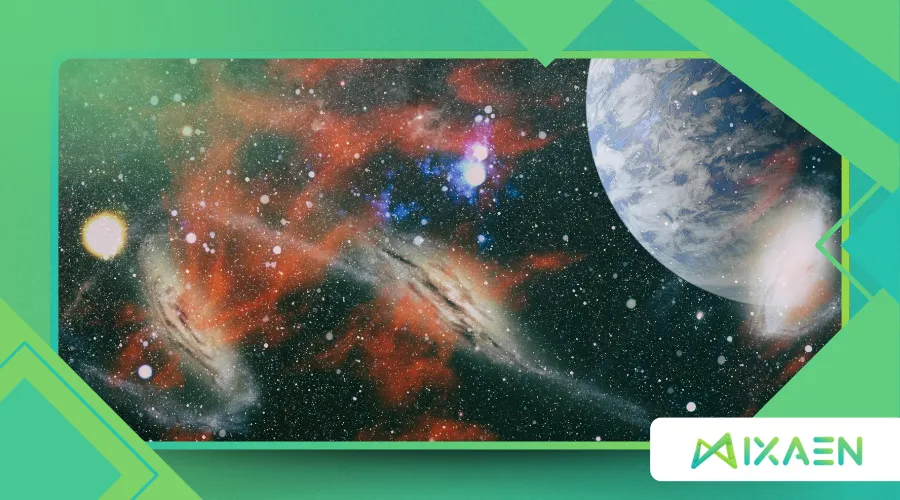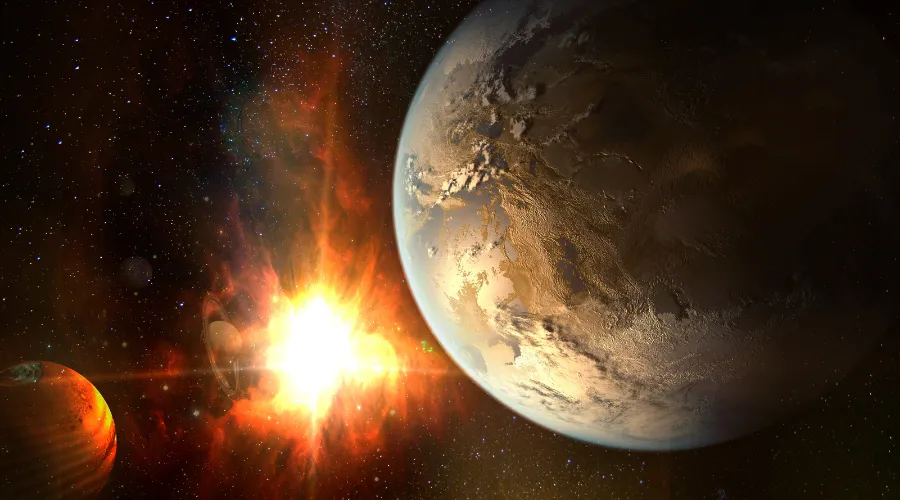New Astronomical Record: The Most Distant Planet Ever Detected by Humans

The cosmos has just handed us a new astronomical record: the detection of the most distant exoplanet ever observed.
Anúncios
Located a staggering 13,000 light-years away, this discovery pushes the boundaries of our cosmic exploration, challenging what we thought possible in planetary detection.
But how did astronomers spot such a remote world?
What makes this finding revolutionary?
And could this distant planet hold clues about the prevalence of life beyond Earth?
Buckle up—we’re diving into the depths of space to uncover the secrets behind this groundbreaking achievement.
As we continue to push the limits of our understanding, each discovery unveils new questions about the universe and our place within it.
The implications of this record extend beyond just the scientific community; they inspire future generations to explore and dream about the cosmos.
The excitement surrounding such discoveries can lead to increased funding and interest in space exploration, fostering a culture of curiosity and innovation.
Each new finding serves as a reminder of how much we have yet to learn about the universe.
Breaking the Cosmic Distance Barrier
For decades, astronomers have relied on two primary methods to detect exoplanets: the transit method (observing dips in starlight as a planet passes by) and the radial velocity method (measuring stellar wobbles caused by gravitational tugs).
However, spotting planets beyond a few thousand light-years seemed nearly impossible—until now.
This new astronomical record was set using a technique called gravitational microlensing, where the gravity of a foreground star bends and magnifies the light of a background star, briefly revealing the presence of an orbiting planet.
The event, cataloged as OGLE-2023-BLG-1439Lb, was detected by the Optical Gravitational Lensing Experiment (OGLE) and confirmed by NASA’s Spitzer Space Telescope.
Why This Discovery Matters
- Expands the known boundaries of exoplanet detection.
- Supports theories about planet formation in extreme environments.
- Raises questions about how many more distant worlds remain hidden.
The ability to detect planets at such extreme distances opens new avenues for research and exploration.
It challenges our understanding of planetary systems and their formation processes, particularly in regions previously thought inhospitable.
Moreover, this discovery may prompt a reevaluation of existing models of star and planet formation, leading to new theories that account for these distant worlds.
As astronomers refine their techniques, we may find that the universe is teeming with more planets than we ever imagined.
For further insights on exoplanet discoveries, you can visit NASA’s Exoplanet Exploration.
A Planet in the Galactic Outskirts: What We Know
The newly discovered planet orbits a dim, low-mass star in the outer reaches of the Milky Way, far beyond where most known exoplanets reside.
Preliminary data suggests it’s a cold gas giant, similar to Jupiter, but its exact composition remains a mystery.
Key Characteristics
| Feature | Detail |
|---|---|
| Distance | ~13,000 light-years |
| Detection Method | Gravitational microlensing |
| Host Star | M-dwarf (low-mass red star) |
| Planet Type | Likely gas giant |
| Orbital Period | Estimated decades |
This new astronomical record shatters previous milestones, such as SWEEPS-11b (27,700 light-years away but detected via transit, making confirmation difficult).
Microlensing, though rare, offers a unique advantage: the ability to detect planets regardless of their orbital alignment.
Understanding the characteristics of such distant planets can help refine our models of planetary formation and evolution.
As we gather more data, we may discover that these distant worlds possess unique features that challenge our current knowledge.
Additionally, studying these planets can provide insights into the conditions necessary for planet formation and the diversity of planetary systems across the galaxy.
The implications of this discovery could extend to our understanding of habitability and the potential for life beyond our solar system.
+ Proxima Centauri and Its Planets: The Best Candidate for Life Beyond Earth?

The Challenges of Detecting Faraway Worlds
Finding planets at such extreme distances isn’t just about technology—it’s about patience and cosmic luck.
Microlensing events are brief and unpredictable, lasting only weeks or months.
Moreover, follow-up observations are nearly impossible once the alignment shifts.
Comparison of Detection Methods
| Method | Max Effective Distance | Strengths | Limitations |
|---|---|---|---|
| Transit | ~3,000 light-years | High precision, atmosphere study | Needs aligned orbits |
| Radial Velocity | ~160 light-years | Measures mass directly | Limited to nearby stars |
| Microlensing | Unlimited | Detects extremely distant planets | One-time event, no replay |
This new astronomical record underscores microlensing’s irreplaceable role in mapping the galactic exoplanet population.
The challenges associated with detecting distant worlds highlight the importance of collaboration among scientists and institutions worldwide.
By pooling resources and expertise, we can enhance our observational capabilities and improve our understanding of the universe.
The unpredictability of microlensing events also emphasizes the need for continuous monitoring and innovative strategies to capture these fleeting moments.
As technology advances, we may develop new methodologies that allow us to predict and observe microlensing events more effectively.

Could There Be Life on Such a Distant Planet?
While this particular world is likely an inhospitable gas giant, its discovery fuels speculation: if planets exist this far out, could Earth-like worlds be lurking in the galactic hinterlands?
A 2022 study in The Astronomical Journal suggested that rogue planets (worlds untethered to stars) might outnumber bound planets in the Milky Way.
If so, microlensing could be our best hope for finding them.
The potential for discovering habitable conditions on distant planets adds an exciting dimension to our search for extraterrestrial life.
As we continue to refine our detection methods, the possibility of uncovering life-supporting environments becomes increasingly plausible.
Moreover, the study of extreme environments on distant planets can inform our understanding of how life might adapt in various conditions.
This knowledge could be crucial for future missions aimed at searching for signs of life beyond Earth, guiding our exploration strategies.
++ Life in the Clouds of Venus: Scientists Detect Possible Biological Signs
The Future of Deep-Space Planet Hunting
With next-generation telescopes like the Nancy Grace Roman Space Telescope (launching 2027), astronomers expect a flood of new microlensing discoveries, potentially including Earth-mass planets in the galactic bulge.
This new astronomical record isn’t just a milestone—it’s a preview of what’s to come.
As technology advances, we may soon uncover planets even farther away, rewriting our understanding of the cosmos.
The future of deep-space exploration is bright, with advancements in technology enabling us to probe further into the universe than ever before.
The excitement surrounding upcoming missions fuels public interest and investment in space exploration, ensuring that our quest for knowledge continues.
In addition to microlensing, other innovative detection methods are being developed, which may yield even more discoveries.
Collaboration between international space agencies and researchers will be key in maximizing our efforts to explore distant worlds.
Final Thoughts: Why This Record Will Be Broken Again
Space is vast, and our tools are improving.
While today’s new astronomical record celebrates an unprecedented feat, tomorrow’s discoveries will push even deeper into the unknown.
One thing is certain: the hunt for distant worlds has only just begun.
What do you think lies beyond the current limits of detection?
A super-Earth? A frozen ocean world?
The possibilities are as endless as the universe itself.
As we continue to explore, our understanding of the cosmos will expand, leading to new questions and discoveries that challenge our perceptions.
Each record broken brings us closer to answering the fundamental questions about our existence and the universe we inhabit.
The journey of discovery is ongoing, and with every new finding, we become more connected to the universe and its mysteries.
